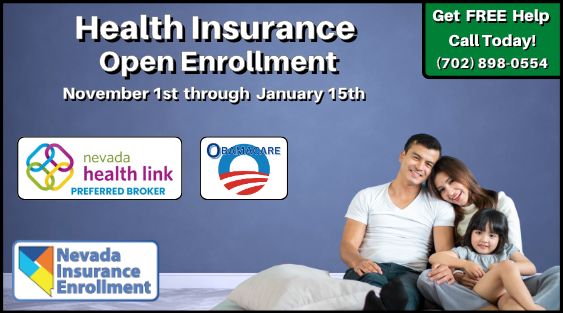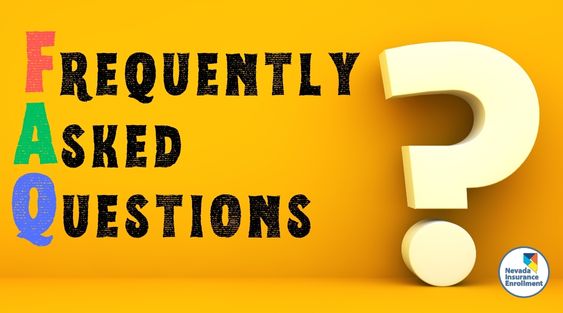Understanding Health Insurance for American Indians
Health insurance for American Indians has evolved significantly since the Affordable Care Act (ACA) was implemented in 2014, offering unique benefits for members of federally recognized tribes. According to Nevada Health Link, American Indians and Alaska Natives (AI/AN) in Nevada enjoy special protections, such as zero cost-sharing and flexible enrollment, enhancing access to coverage through the Health Insurance Marketplace, Medicaid, and the Indian Health Service (IHS). These benefits, part of Nevada tribal health coverage, ensure affordable and comprehensive care. Understanding these options help navigate the Nevada health plan shift effectively.






ACA Benefits for American Indians
The ACA enhances health insurance for American Indians by ensuring access to affordable coverage. For AI/AN members of federally recognized tribes, Healthcare.gov outlines key protections. If an American Indian’s household income is up to 300% of the Federal Poverty Level (FPL) – approximately $45,180 for an individual or $93,360 for a family of four in 2025 – they qualify for a zero cost-sharing Silver-tier Marketplace plan. This Silver-tier plan eliminates deductibles, copayments, and coinsurance for covered services, and allows premium tax credits (available based on income and household size) to lower their monthly premiums. Unlike the standard open enrollment period (November 1 to January 15), AI/AN individuals can enroll or change Marketplace plans monthly, offering flexibility to adjust coverage. Additionally, enrollment in Marketplace plans, Medicaid, or the Children’s Health Insurance Program (CHIP) allows continued use of IHS, tribal, or urban Indian health programs (I/T/U) alongside other providers. These benefits make tribal health insurance more affordable and adaptable.
How Zero Cost-Sharing Works
Zero cost-sharing is a cornerstone of tribal health insurance benefits. For an American Indian with income up to 300% of the FPL, enrolling in a Silver-tier Marketplace plan eliminates out-of-pocket costs for covered services, such as doctor visits or prescriptions. Healthcare.gov notes that this applies only to Silver plans, ensuring affordability without sacrificing essential benefits like hospitalization or preventive care. This protection, combined with premium tax credits, reduces financial barriers, supporting the Nevada health plan shift toward equitable coverage.
Integrating IHS with Marketplace Coverage
A key advantage of this health insurance is the ability to combine IHS services with Marketplace or Medicaid coverage. Nevada Health Link confirms that an American Indian can continue receiving care from IHS, tribal, or urban Indian health programs while enrolled in other plans. This dual access expands provider options, as Marketplace plans include non-IHS providers, covering services like specialty care that IHS may not offer. When I/T/U providers bill your insurance, it benefits tribal communities by increasing resources for additional services.
Documentation for Benefits
To access these benefits, an American Indian must provide documentation of tribal membership, such as a tribal enrollment card or a certificate of degree of Indian blood from the Bureau of Indian Affairs. Nevada Health Link requires this verification to confirm eligibility for zero cost-sharing and monthly enrollment periods, ensuring seamless access to Nevada tribal health coverage.
continued below ⇓
Recent Posts


Health Insurance Open Enrollment
Health Insurance Open Enrollment is Here! Open Enrollment for Obamacare health insurance coverage is from November 1st, through January 15th. If you call after January 15th, you will have missed the time frame to receive a Health Insurance Subsidy and a Qualified Health Insurance Plan.


Health Insurance Notices from Employers
Employer health insurance notices explain how Nevada employees can explore Marketplace options. Learn how to use these notices to compare costs, check subsidy eligibility, and make informed decisions.


Does My Age and Gender Affect My Auto Insurance Premium?
Curious how your premium affected by age and gender impacts auto insurance in Nevada? Learn why age, gender, and other factors like driving record and vehicle type influence rates. Understand Nevada’s minimum liability coverage and discover cost-saving tips to manage your premium. Nevada Insurance Enrollment helps you find a policy that fits your needs.
Health Insurance Quotes
1). By Phone
(702) 898-0554
2). Online Quote
3). In Person
4260 W. Craig Road #150-A
N. Las Vegas, NV 89032
What Is a Health Insurance Carrier?
-
What is a Health Insurance Carrier?
A health insurance company, also known as a health insurance carrier, is an organization that provides health insurance plans to individuals, families, or groups. Read More: https://www.nevadainsuranceenrollment.com/health/health-insurance-carrier/ https://www.nevadainsuranceenrollment.com/health/new-health-insurance-plan/ https://www.nevadainsuranceenrollment.com/health/health-plan-benefits/ -
What Does a Health Insurance Carrier Do?
A health insurance carrier offers plans that cover medical expenses, such as doctor visits, hospital stays, and prescription medications. Insurers partner with healthcare providers to offer financial protection against high medical costs. By paying a monthly premium, policyholders gain access to a network of doctors, hospitals, and clinics, ensuring they receive necessary care without overwhelming expenses. Read More: https://www.nevadainsuranceenrollment.com/health/new-health-insurance-plan/ https://www.nevadainsuranceenrollment.com/health/health-plan-benefits/ -
What Type of Plans Are Offered by Health Insurance Carriers?
Health insurance carriers provide a range of plans to suit diverse needs. Common types include:• Health Maintenance Organization (HMO): Requires using in-network providers and often a referral from a primary care physician for specialists.
• Preferred Provider Organization (PPO): Allows visits to out-of-network providers, but in-network care is less expensive.
• Exclusive Provider Organization (EPO): Covers only in-network care, except in emergencies, like an ER (Emergency Room) visit.
• Point of Service (POS): Blends HMO and PPO features, requiring referrals but allowing out-of-network care at a higher cost.
Each plan offers a balance of cost, flexibility, and coverage, so selecting one depends on your healthcare needs and budget. Read More: https://www.nevadainsuranceenrollment.com/health/metal-plans-explained/ -
What Factors Should I Consider When Choosing a Health Insurance Carrier?
When selecting a health insurance carrier, evaluate these factors:• Network Size: Does the carrier include your preferred doctors or hospitals in its network?
• Coverage Options: Are essential services, like preventive care or prescription drugs, included?
• Customer Service: Is support available for questions about claims or coverage?
• Premium Costs: Can you afford the monthly payments alongside out-of-pocket costs like deductibles?
• Reputation: Does the carrier have a strong history, as verified by resources like Nevada Division of Insurance?
These considerations ensure your carrier aligns with your healthcare and financial goals. Read More: https://www.nevadainsuranceenrollment.com/health/health-plan-benefits/
Medicaid and CHIP for American Indians
Tribal health insurance options extend to Medicaid and CHIP, which offer special eligibility rules:
- No Out-of-Pocket Costs: Services provided by IHS, tribal, or urban Indian programs have no copayments, deductibles, or premiums when enrolled in Medicaid or CHIP.
- Year-Round Enrollment: Unlike standard Medicaid enrollment, AI/AN individuals can enroll anytime, not just during open enrollment.
- Enhanced Access: Medicaid and CHIP cover services beyond IHS, such as mental health or dental care, expanding Nevada tribal health coverage.
Kaiser Family Foundation notes that over 50% of non-elderly AI/AN individuals nationwide rely on Medicaid, highlighting its importance for tribal communities.
Enrollment Periods and Start Dates
Tribal health insurance benefits include flexible enrollment through Nevada Health Link. AI/AN members can enroll or change Marketplace plans monthly, with coverage start dates following standard rules:
- Enrollment by the 15th of the month: Coverage begins on the 1st of next month.
- Enrollment after the 15th: Coverage begins the 1st of the month after the next month.
For example, enrolling on March 10 starts coverage April 1; enrolling March 16 starts coverage May 1.
Navigating Enrollment Challenges
Kaiser Family Foundation reports that 60% of AI/AN Marketplace enrollees in 2025 value the monthly enrollment flexibility but face challenges verifying tribal status. Submitting clear documentation early and contacting Nevada Health Link for assistance can streamline the process, ensuring access to tribal health insurance benefits.
Search this website
Our Most Popular Pages
By page visits (this month)
#1 - Health Insurance Subsidy Chart
#2 - Health Insurance
#3 - Health Insurance WITH a Subsidy
#4 - Insurance Blog
#5 - Request a Quote
Benefits of the Nevada Health Plan Shift for American Indians
The Nevada health plan shift, driven by ACA regulations, strengthens health insurance for American Indians. Marketplace plans cover essential health benefits, including preventive care and mental health, complementing IHS services. Financial support through subsidies and zero cost-sharing reduces costs, with Nevada Health Link reporting a 15% enrollment increase among AI/AN individuals since 2023 due to American Rescue Plan Act (ARPA) and Inflation Reduction Act (IRA) subsidies. Billing Marketplace or Medicaid plans for I/T/U services increase tribal health program funding. Monthly plan changes allow AI/AN individuals to adapt coverage to changing needs.
How to Access Tribal Health Insurance Benefits
To maximize tribal health insurance benefits, consider these steps:
- Verify Tribal Status: Submit documentation (e.g., tribal enrollment card) to Nevada Health Link to qualify for zero cost-sharing and monthly enrollment.
- Explore Marketplace Plans: Compare Silver-tier plans on Nevada Health Link during open enrollment (November 1 to January 15).
- Check Medicaid/CHIP Eligibility: Apply through Nevada Health Link or Nevada Department of Health and Human Services for year-round enrollment.
- Consult IHS Providers: Confirm which services can be billed to your insurance to enhance tribal program resources.
These steps, supported by Nevada Division of Insurance regulations, ensure access to Nevada tribal health coverage.
How Nevada Insurance Enrollment Can Help
The Nevada health plan shift has expanded health insurance options for an American Indian, offering affordable and flexible coverage. Nevada Insurance Enrollment can assist by explaining zero cost-sharing, monthly enrollment, and IHS integration in plain language, helping compare Marketplace, Medicaid, and CHIP options, and ensuring tribal health insurance aligns with healthcare and financial needs. Their licensed health insurance agents are here to help when you call – assisting with navigating Nevada tribal health coverage and maximizing ACA benefits.
References
The following reputable sources provided information for this article:
• Nevada Health Link
• Healthcare.gov
• Nevada Division of Insurance
• Nevada Department of Health and Human Services
• Kaiser Family Foundation
Why These Sources Were Used
Topic/Fact: ACA Benefits and Zero Cost-Sharing for American Indians
Source: Healthcare.gov; Nevada Health Link
Verification: Healthcare.gov’s tribal health section confirms that AI/AN members with incomes up to 300% FPL qualify for zero cost-sharing Silver-tier Marketplace plans and monthly enrollment flexibility. Nevada Health Link’s enrollment section verifies these benefits apply through the state’s marketplace, supporting access to Nevada tribal health coverage.
Topic/Fact: IHS Integration with Marketplace and Medicaid Coverage
Source: Nevada Health Link; Healthcare.gov
Verification: Nevada Health Link confirms that AI/AN individuals can use IHS, tribal, or urban Indian health programs alongside Marketplace or Medicaid plans. Healthcare.gov’s tribal section verifies that billing these plans increases resources for tribal health programs.
Topic/Fact: Medicaid and CHIP Eligibility for AI/AN
Source: Nevada Department of Health and Human Services; Kaiser Family Foundation
Verification: The Nevada Department of Health and Human Services confirms year-round Medicaid and CHIP enrollment for AI/AN individuals with no out-of-pocket costs at I/T/U providers. Kaiser Family Foundation’s Medicaid reports confirm that over 50% of non-elderly AI/AN rely on Medicaid nationwide.
Topic/Fact: Tribal Status Documentation
Source: Nevada Health Link
Verification: The enrollment section specifies that tribal membership documentation, such as a tribal enrollment card or certificate of degree of Indian blood, is required to access zero cost-sharing and monthly enrollment benefits.
Topic/Fact: Enrollment Periods and Challenges
Source: Nevada Health Link; Kaiser Family Foundation
Verification: Nevada Health Link’s enrollment section confirms monthly enrollment for AI/AN and coverage start dates (e.g., April 1 for enrollment by March 15). Kaiser Family Foundation reports that 60% of AI/AN enrollees in 2025 face challenges verifying tribal status.
Topic/Fact: Nevada Health Plan Shift and Enrollment Trends
Source: Nevada Health Link; Nevada Division of Insurance
Verification: Nevada Health Link reports a 15% enrollment increase among AI/AN since 2023 due to ARPA and IRA subsidies. The Nevada Division of Insurance confirms regulatory support for these benefits, ensuring access to Nevada tribal health coverage.

